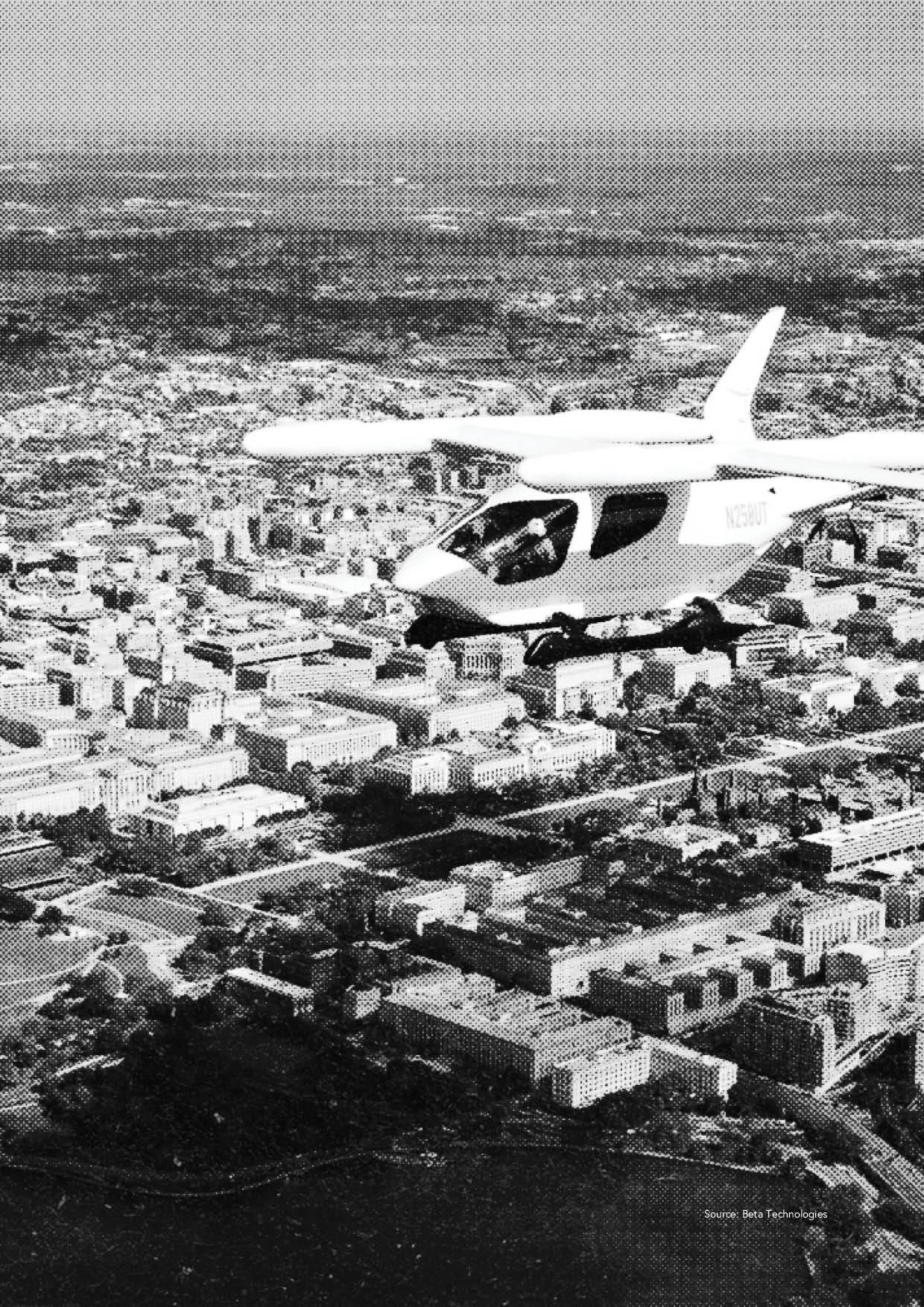REPORT
The $79 Billion Opportunity
Climate Tech’s Defence-Driven Growth Engine
The $79 Billion Opportunity
Climate Tech’s Defence-Driven Growth Engine
Our report dives deep into a transformative opportunity: militaries, responsible for 5.5% of global emissions, are becoming early adopters of climate technologies that enhance operational resilience, reduce vulnerabilities, and save lives.
The $79 BILLION OPPORTUNITY
Global defence spending is surging, with the EU alone mobilising up to €800 billion in additional investments by 2030. Simultaneously, the climate tech market is projected to reach $4–12 trillion annually by 2030.
At the intersection of these two trends lies a transformative opportunity: militaries, responsible for 5.5% of global emissions, are adopting climate technologies like synthetic fuels, electric aviation, and geothermal energy to reduce vulnerabilities and save lives. These innovations offer dual-use potential, benefiting both defense and civilian markets, with significant investment opportunities in high-growth sectors such as distributed energy systems and electric military vehicles.
The defence sector’s urgent need for energy independence creates a powerful catalyst for next-generation climate technologies. This creates an unprecedented opportunity where operational resilience, not sustainability branding, drives adoption.
This report explores how the investment opportunity at the intersection of defence and climate technology represents the chance to fundamentally reshape global security, accelerate the energy transition, and create entirely new industrial capabilities.
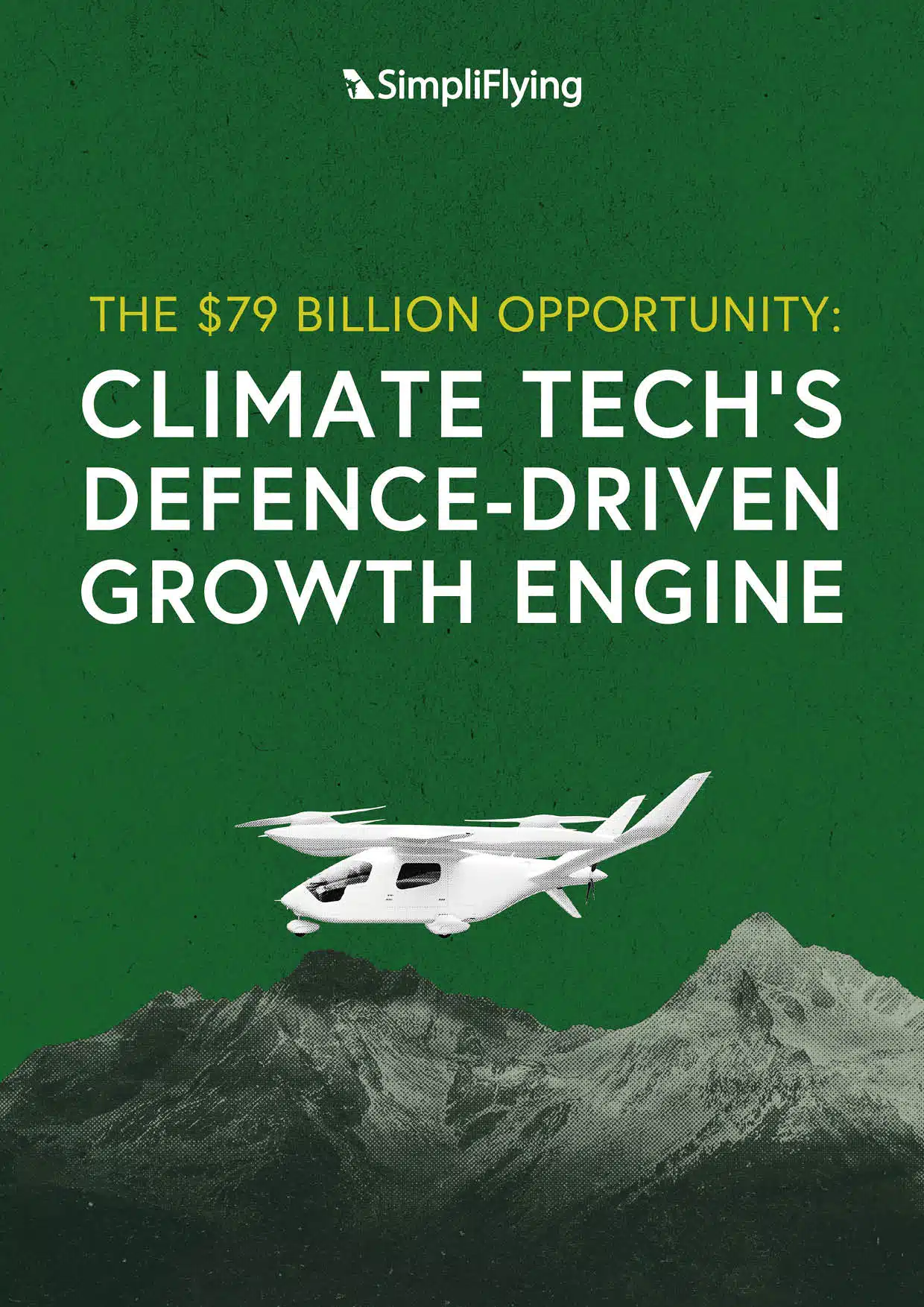
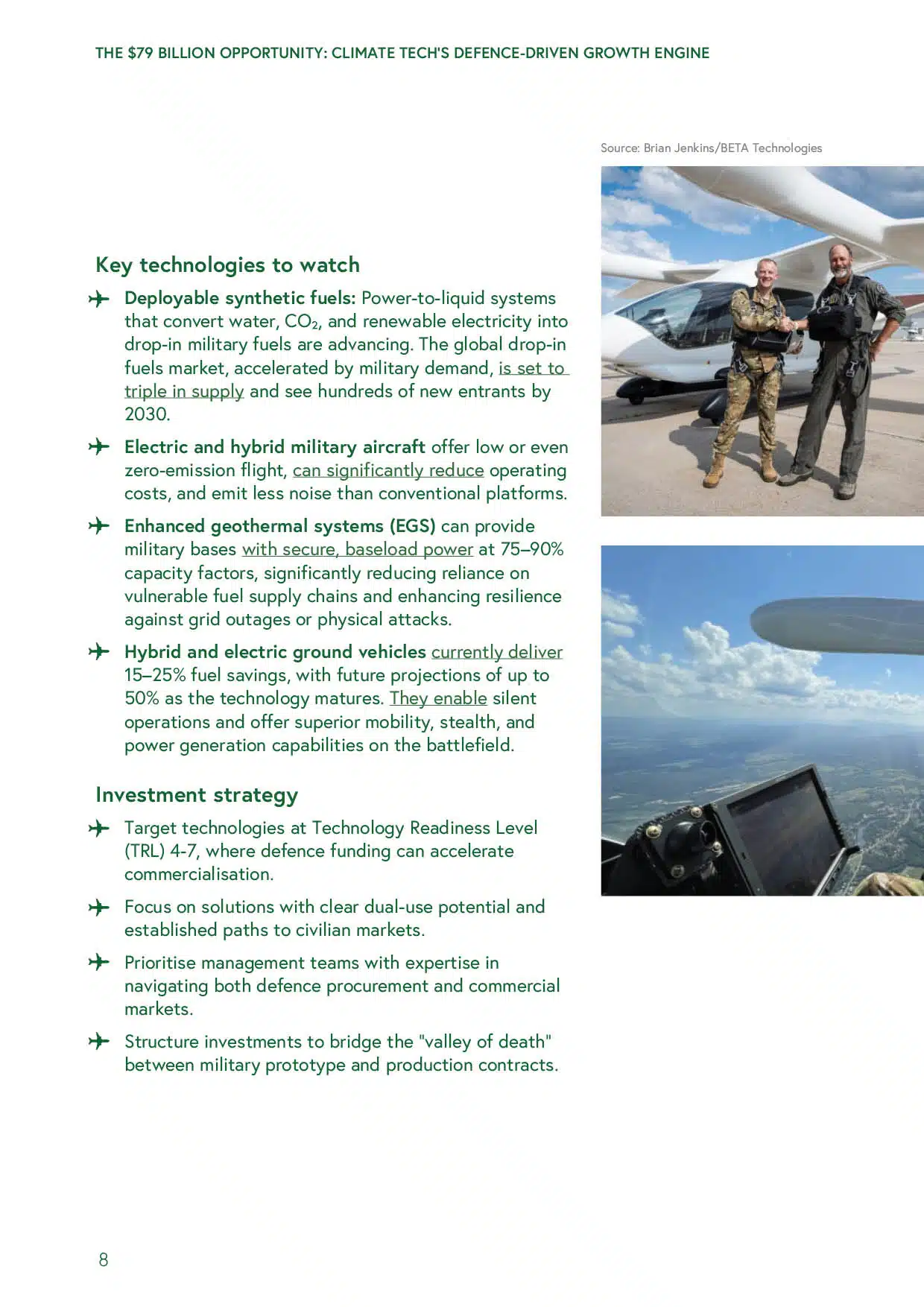
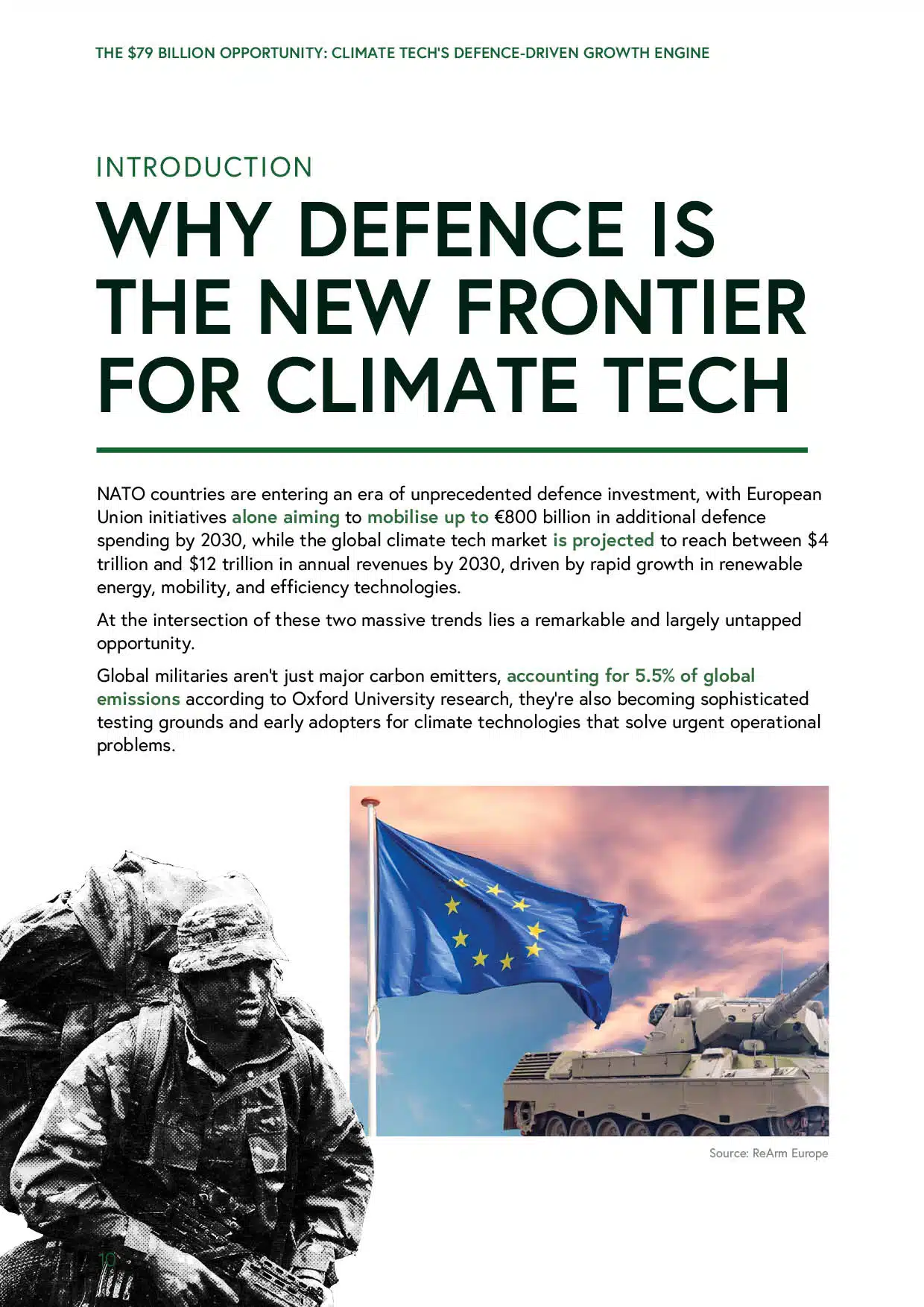
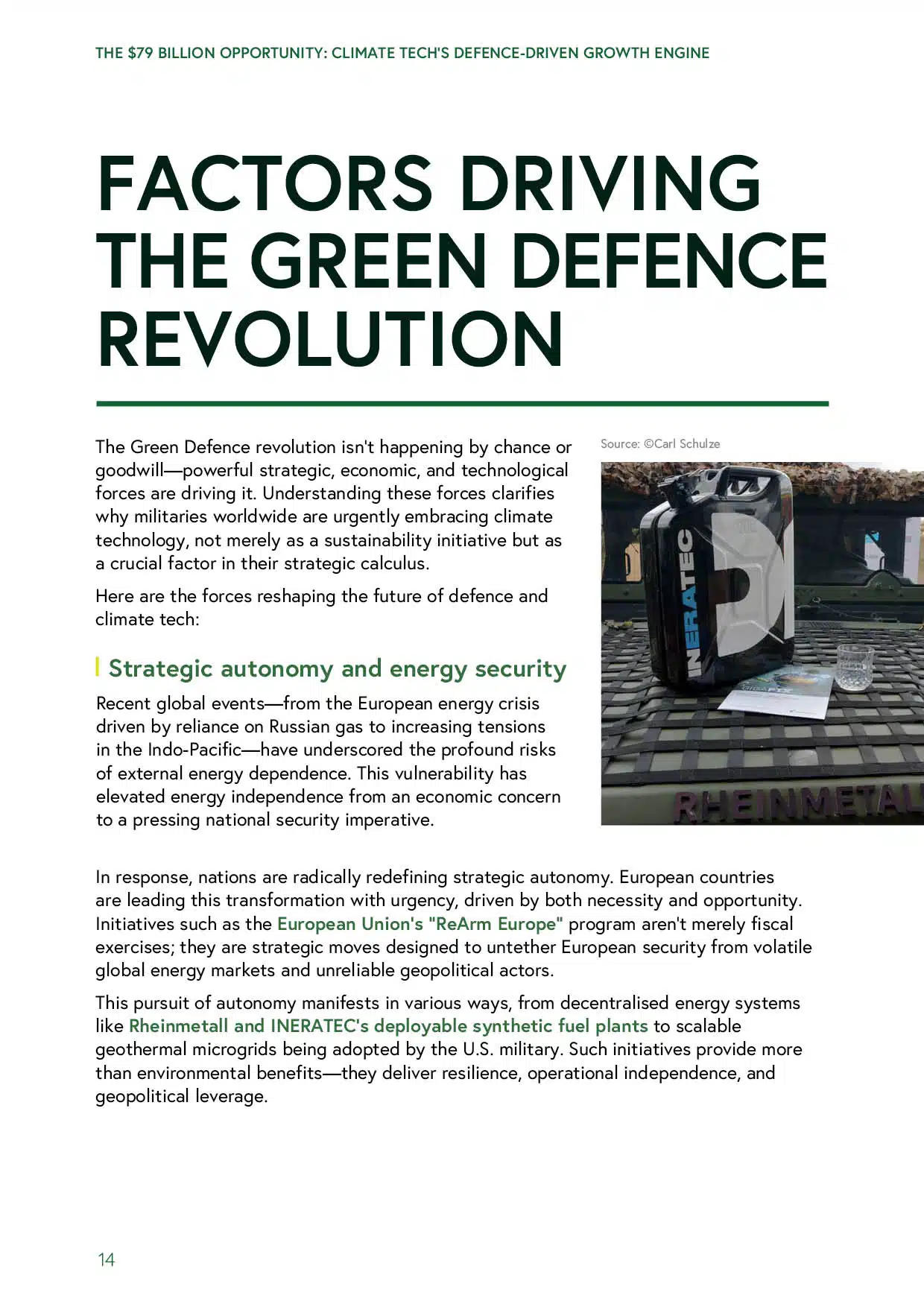
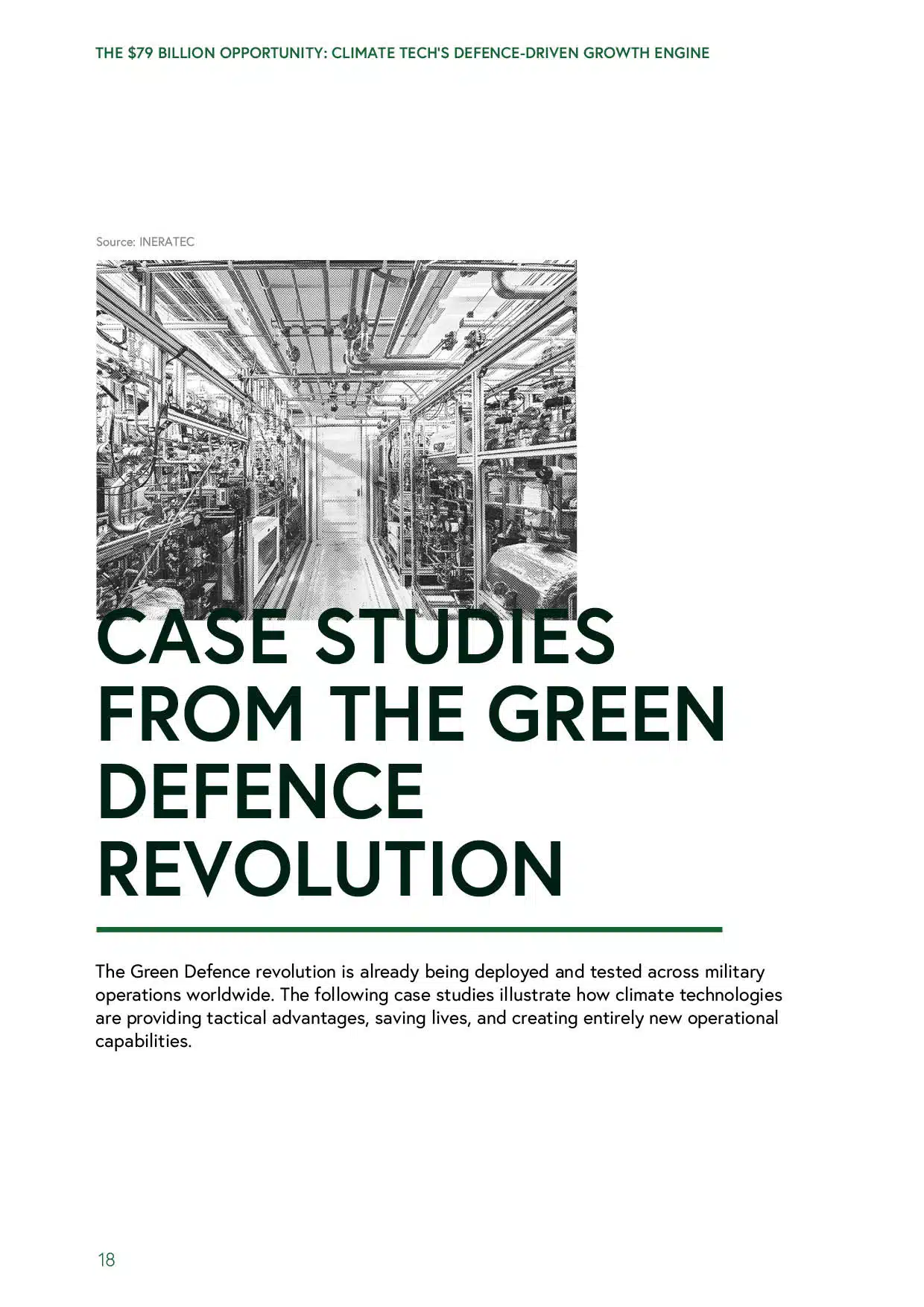
Five Catalysts Driving Climate Tech Innovation in Defense
Strategic Autonomy and Energy Security
Nations are prioritising energy independence to reduce reliance on volatile fuel supply chains, with technologies like synthetic fuels and microgrids enhancing military resilience.
Cost of Logistics and Human Lives
Fuel convoys are high-risk targets; electrification and renewable energy solutions cut logistical burdens and casualties, improving operational efficiency.
Technology Leapfrogging and Dual-Use Innovation
Defense investments accelerate climate tech development, with military-grade innovations like advanced batteries and drones transitioning to civilian applications.
Climate Policy and Regulatory Push
Governments are enforcing strict climate targets for militaries, driving adoption of sustainable technologies and reshaping procurement strategies.
High-Potential Investment Sectors
Key areas include electric military vehicles ($27B by 2030), synthetic fuels ($70B by 2030), and geothermal energy, offering scalable dual-use solutions.
